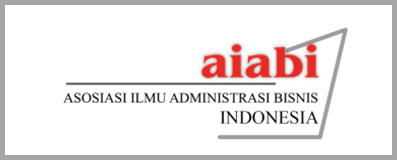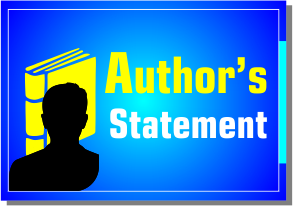Work Environment, Work Discipline, and Interpersonal Communication to Improve Hotel Employee Performance: The Mediating Role of Sustainable Collaboration Sebagai Mediator
DOI:
https://doi.org/10.31334/bijak.v21i1.3674Keywords:
Employee Performance, Sustainable Collaboration, Work Environment, Work Discipline, Interpersonal Communication,Abstract
This research aims to find out and obtain empirical evidence regarding the influence of Capital Structure, Business Growth, and Tax Planning on company value. This research is included in the type of associative quantitative research. The population in this research is properties & real estate sector companies listed on the Indonesia Stock Exchange for the 2017-2022 observation period. Sampling was carried out using purposive sampling technique. The data obtained was analyzed using multiple linear regression using E-views 12 software. The results of this research show that simultaneously Capital Structure, Business Growth and Tax Planning have an influence on Company Value. Partially, Capital Structure and Tax Planning have no effect on Company Value. Meanwhile, business growth partially has an influence on company value.References
Aboramadan, M., Crawford, J., Türkmenoğlu, M. A., & Farao, C. (2022). Green inclusive leadership and employee green behaviors in the hotel industry: Does perceived green organizational support matter? International Journal of Hospitality Management, 107(July), 103330. https://doi.org/10.1016/j.ijhm.2022.103330
Ansell, C., & Gash, A. (2008). Collaborative governance in theory and practice. Journal of Public Administration Research and Theory, 18(4), 543–571. https://doi.org/10.1093/jopart/mum032
Arrozaaq, D. L. C. (2016). Collaborative Governance (Studi Tentang Kolaborasi Antar Stakeholders Dalam Pengembangan Kawasan Minapolitan di Kabupaten Sidoarjo). Kebijakan Dan Manajemen Publik, 3, 1–13.
Brown, T. A. (2015). Confirmatory Factor Analysis for Applied Research. In T. D. Little (Ed.), The Guilford Press A Division of Guilford Publications, Inc. 72 Spring Street, New York, NY 10012 www.guilford.com (Second Edi). https://doi.org/10.1198/tas.2008.s98
Climates, D. (n.d.). Defensive Communication by Jack R. Gibb.
Darodjat. (2018). Pengaruh Disiplin Kerja Terhadap Kinerja Karyawan yang Dimediasi Oleh Produktivitas Kerja Perusahaan CV. Laut Selatan Jaya di Bandar Lampung. Jurnal Manajemen Dan Bisnis, 3(1), 22.
DeVito, J. A. (2013). Interpersonal Communication Book, The, 13/E. New York, NY: United.
Dorisman, A., Suradji, A., & Setiawan, R. (n.d.). Penanggulangan Kecelakaan Lalu Lintas Collaboration Between Stakeholders In Traffic Accident Management. 1.
Fitrijanti, P., Sh, S., & Purwokerto, P. P. (n.d.). Kolaborasi Dan Perannya Dalam Pengembangan Budaya Kerja Dan Tempat Kerja Yang Kolaboratif Poppy Fitrijanti Soeparan Sh, Ma Politeknik Pratama Purwokerto. 7.
Fu, S., Cheng, X., Su, L., Bilgihan, A., & Okumus, F. (2020). Designing Collaboration Process Facilitation in Hotel Management Teams to Improve Collaboration Performance. International Journal of Hospitality Management, 88(December 2019), 102527. https://doi.org/10.1016/j.ijhm.2020.102527
Gibb, J. R. (1982). Defensive communication. JONA: The Journal of Nursing Administration, 12(4), 14–17.
Gibson, E. L. (2006). Emotional influences on food choice: sensory, physiological and psychological pathways. Physiology & Behavior, 89(1), 53–61.
Gulbahar, Y., & Madran, R. O. (2009). Communication and Collaboration, Satisfaction, Equity, and Autonomy in Blended Learning Environments: A Case from Turkey. International Review of Research in Open and Distance Learning, 10(2), n2.
Hair, J., Hult, G. T., Ringle, C., & Sarstedt, M. (2017). A Primer on Partial Least Squares Structural Equation Modeling (PLS-SEM) - Joseph F. Hair, Jr., G. Tomas M. Hult, Christian Ringle, Marko Sarstedt. In Sage Publications, Inc.
Hair Joe, Sarstedt Marko, Hopkins Lucas, K. V. (2014). Partial least squares structural equation modeling ( PLS-SEM ) An emerging tool in business research. February. https://doi.org/10.1108/EBR-10-2013-0128
Hibou, B. (2009). Work discipline, discipline in Tunisia: complex and ambiguous relations†. African Identities, 7(3), 327–352. https://doi.org/10.1080/14725840903069114
Hidayati, S. K., Perizade, B., & Widiyanti, M. (2019a). Effect of work discipline and work environment to performance of employees. International Journal of Scientific and Research Publications, 9(12), 391–398.
Hidayati, S. K., Perizade, B., & Widiyanti, M. (2019b). Effect Of Work Discipline And Work Environment To Performance Of Employees. International Journal of Scientific and Research Publications (IJSRP), 9(12), p9643. https://doi.org/10.29322/ijsrp.9.12.2019.p9643
Hoffman, J. J., Hoelscher, M. L., & Sherif, K. (2005). Social capital, knowledge management, and sustained superior performance. Journal of Knowledge Management, 9(3), 93–100. https://doi.org/10.1108/13673270510602791
Iyer, K. N. S. (2014). Operational impact of collaboration and resource specificity: The moderating role of technology context. Journal of Business and Industrial Marketing, 29(5), 387–399. https://doi.org/10.1108/JBIM-07-2011-0088
Johnson, Z. D., LaBelle, S., & Waldeck, J. H. (2017). A cautious approach to reliance on interpersonal communication frameworks: the importance of context in instructional communication research. Communication Education, 66(1), 115–117.
Katou, A. A., Budhwar, P. S., & Patel, C. (2021). A trilogy of organizational ambidexterity: Leader’s social intelligence, employee work engagement and environmental changes. Journal of Business Research, 128(February 2020), 688–700. https://doi.org/10.1016/j.jbusres.2020.01.043
Kristen, U., Wacana, S., Diri, P. E., Dan, K., & Tim, K. (2017). Magister Manajemen Pendidikan FKIP Peningkatan Aktivitas Komunikasi Interpersonal Dalam Organisasi Melalui. 2, 161–170.
Kristiyaningsih, E., Muljono, P., & Mulyani, E. S. (2017). Interpersonal Communication Ability of Librarian’s PerformanceiIn Ministry of Agriculture. Jurnal Komunikasi Pembangunan, 15(2), 52–66.
Krskova, H., & Breyer, Y. A. (2023). The influence of growth mindset, discipline, flow and creativity on innovation: Introducing the M.D.F.C. model of innovation. Heliyon, 9(3), e13884. https://doi.org/10.1016/j.heliyon.2023.e13884
La Lopa, J. M. (2010). Lessons learned from the scholarly works of others to stimulate teaching and research ideas in the culinary arts and hospitality discipline. Journal of Culinary Science and Technology, 8(4), 169–179. https://doi.org/10.1080/15428052.2010.535774
Leischnig, A., & Kasper-Brauer, K. (2015). Employee adaptive behavior in service enactments. Journal of Business Research, 68(2), 273–280. https://doi.org/10.1016/j.jbusres.2014.07.008
Lestary, L., & Harmon, H. (2018). Pengaruh Lingkungan Kerja Terhadap Kinerja Karyawan. Jurnal Riset Bisnis Dan Investasi, 3(2), 94. https://doi.org/10.35697/jrbi.v3i2.937
Lozano, R., Barreiro-Gen, M., & Zafar, A. (2021). Collaboration for organizational sustainability limits to growth: Developing a factors, benefits, and challenges framework. Sustainable Development. https://doi.org/10.1002/sd.2170
Macklin, T. J., & Rossiter, C. M. (1976). Interpersonal communication and self-actualization. Communication Quarterly, 24(4), 45–50. https://doi.org/10.1080/01463377609369237
Massoudi, D. A. H., & Hamdi, D. S. S. A. (2017). The Consequence of work environment on Employees Productivity. IOSR Journal of Business and Management, 19(01), 35–42. https://doi.org/10.9790/487x-1901033542
Mulyana, D. (2000). Pengantar ilmu komunikasi. Bandung: Remaja Rosdakarya.
Saputra, P., Sudiro, A., & Irawanto, D. W. (2018). Job satisfaction in compensation, environment, discipline, and performance: evidence from Indonesia higher education. Management and Economics Journal (MEC-J), 2(3), 257. https://doi.org/10.18860/mec-j.v0i0.5611
Sarstedt, M., Ringle, C. M., & Hair, J. F. (2017). Handbook of Market Research. In Handbook of Market Research (Issue September).
Sastrohadiwiryo, B. S. (2003). Manajemen Lingkungan: Sesuatu yang seringkali Terlupakan. Manajerial, 400.
Schrage, M. (1995). No more teams: Mastering the dynamics of creative collaboration.
Sedarmayanti. (2009). Sumber Daya Manusia Dan Produktivitas Kerja. CV.Mandar Maju.
Sedarmayanti. (2011). Tata Kerja dan Produktivitas Kerja. CV.Mandar Maju.
Sinambela, L. P., & Sinambela, S. (2019). Manajemen Kinerja; Pengelolaan, Pengukuran, dan Implikasi Kinerja.
Sulaksono, H. (2015). Budaya Organisasi dan Kinerja. Deepublish.
Sutrisno, E. (2013). Manajemen sumber daya manusia.
Syani, A. (1994). Sosiologi: Skematika Teori dan Terapan. Bumi Aksara.
Tyas, R. D., & Suharyono, B. S. (2018). pengaruh disiplin kerja dan lingkungan kerja terhadap kinerja karyawan (studi pada karyawan PT. pertamina (persero) refinery unit IV cilacap). Jurnal Administrasi Bisnis, 62(1), 172–180.
Waktola, B. S. (2019). Boosting Employee Performance; Impact of Working Environment on Employees Performance: Case study on Ethio-Telecom at Ambo Branch.
Warren, C., Becken, S., & Coghlan, A. (2017). Using persuasive communication to co-create behavioural change–engaging with guests to save resources at tourist accommodation facilities. Journal of Sustainable Tourism, 25(7), 935–954. https://doi.org/10.1080/09669582.2016.1247849
Downloads
Published
Issue
Section
License

This work is licensed under a Creative Commons Attribution-ShareAlike 4.0 International License
Please find the rights and licenses in Majalah Ilmiah Bijak By submitting the article/manuscript of the article, the author(s) agree with this policy. No specific document sign-off is required.
- License
The commercial use of the article will be governed by the Creative Commons Attribution license as currently displayed on Creative Commons Attribution-ShareAlike 4.0 International License.
2. Author(s)' Warranties
The author warrants that the article is original, written by stated author(s), has not been published before, contains no unlawful statements, does not infringe the rights of others, is subject to copyright that is vested exclusively in the author and free of any third party rights, and that any necessary written permissions to quote from other sources have been obtained by the author(s).
3. User Rights
Majalah Ilmiah Bijak spirit is to disseminate articles published are as free as possible. Under the Creative Commons license, Majalah Ilmiah Bijak permits users to copy, distribute, display, and perform the work for non-commercial purposes only. Users will also need to attribute authors and Majalah Ilmiah Bijak on distributing works in the journal and other media of publications.
4. Co-Authorship
If the article was jointly prepared by more than one author, any authors submitting the manuscript warrants that he/she has been authorized by all co-authors to be agreed on this copyright and license notice (agreement) on their behalf, and agrees to inform his/her co-authors of the terms of this policy. Jurnal Bijak will not be held liable for anything that may arise due to the author(s) internal dispute. Majalah Ilmiah Bijak will only communicate with the corresponding author.
5. Miscellaneous
Majalah Ilmiah Bijak will publish the article (or have it published) in the journal if the article’s editorial process is successfully completed. Jurnal Bijak editors may modify the article to a style of punctuation, spelling, capitalization, referencing and usage that deems appropriate. The author acknowledges that the article may be published so that it will be publicly accessible and such access will be free of charge for the readers as mentioned in point 3.
Every accepted manuscript should be accompanied by "Copyright Transfer Agreement"prior to the article publication.





1.png)




